Building Product Transparency and Sustainability – Closing the Loop
The Construction Industry's Evolution in Evaluating and Selecting Better Building Materials 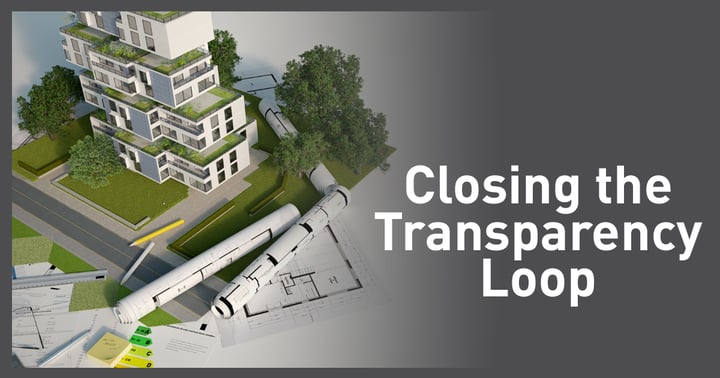
It never quite hit me as hard as when I sat listening to the most recent Living Future Conference proceedings. The conference theme was “Sustaining Hope Within Crisis,” an understatement given the domestic and global challenges we faced.
But reflecting on their message – and a few deep breaths about the times we live in – the conference clarified the role of the company I work for, a leader in the building materials industry, has played and can play in impacting our future world. It is much easier to let the mind believe an individual or company’s actions cannot impact the whole.
Conferences like these also remind everyone involved that the design and construction of buildings is constantly evolving. Fresh ways of thinking drive innovation and optimization across many aspects of our industry – sustainability being only one catalyst for that evolution.
But there is no better example of transformative change happening right now than how the industry thinks about building materials and their contribution to sustainability; not only the role products play in healthier, efficient, and durable buildings, but the impacts they have on environmental, human, and societal health. Every individual choice, through this lens, is significant to the whole.
How our industry evaluates, selects, and implements building products into projects has evolved with a more holistic perspective in mind and industry-wide collaboration is driving positive action. ILFI, their Living Future Conference, and their myriad initiatives like the Living Product 50 deserve significant credit for this positive development.
For us, and many other leading manufacturers, bringing game-changing solutions to the built environment, while also doing so in a sustainable way, has always been part of the very DNA (or overall journey) of our company. But now, this wider lens of evaluating products provides a welcome departure from single-attribute product sustainability that historically influenced industry discourse – all those individual choices that might have seemed like “the right thing to do,” or good for marketing materials.
This means we can finally “close the loop” on sustainable construction. You have probably heard that before. But what does it mean?
All Agree: Sustainably Conscious Buildings and products = Better World
The Living Future Conference brings together an impressive collection of thought leaders, visionaries, and champions in the world of sustainability, which provides powerful learning opportunities and a chance to collaborate with a range of design professionals, contractors, building product manufacturers, owners, federal and local government agencies, consultants and others.
Moreover, the conference discussions raised consciousness that we must look beyond (or perhaps within) the buildings themselves. All members of a project team, collectively, must be working towards the same goal and put their own bold action into place.
Particular emphasis goes into the products/materials (and, thus, the companies that make them) that go into buildings; rightly so given the potential impacts products have across their lifecycle. But without clear proof that better products matter to AECs (Architects, Engineers, and Contractors), manufacturers are struggling to make sustainability the priority it needs to be to achieve the overall shared goal.
A Multi-Faceted Holistic Approach to Healthy Building Design
There are many passionate leaders in this “deep green” community. With the ILFI spearheading great thought leadership, industry leading product manufacturers have amplified their efforts by adopting various ILFI initiatives.
In one of the talks at Living Future, Annie Bevan with Superior Essex laid out how her organization takes this approach to sustainability. I think it provides a useful and important framework for how design and construction teams can evaluate, specify, and select building products to align with their own sustainability goals in three simple buckets:
- Products: how do building products impact human and environmental health?
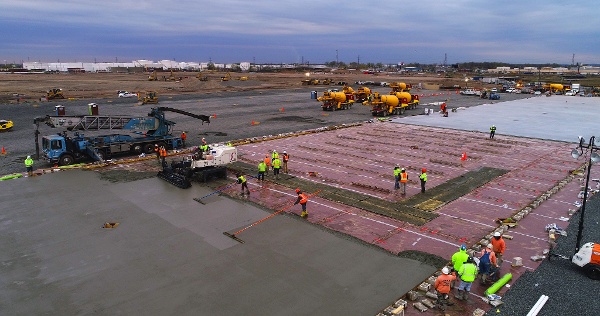
Project teams use building product transparency reporting information to make better informed decisions for creating buildings that protect human wellbeing. We can look at the actual ingredients in products and VOC content to gain a better understanding of potential health risks posed to building occupants or even workers on construction sites or within the manufacturing process. Chemical inventory reporting tools like the Health Product Declaration (HPD) and DECLARE Label are streamlining the process for manufacturers to provide transparency information and for project teams to interpret the information.
Moreover, the industry is looking closer at the environmental impact of building products across the entire life cycle. The process of extracting raw materials, manufacturing processes, shipping ingredients and finished goods across the supply chain and to construction sites, etc. all generate greenhouse gas emissions and represent the embodied carbon of a building product. As manufacturers begin to understand the embodied carbon (and other environmental impacts) of their products through a Life Cycle Assessment, it provides necessary insight to improve, optimize, and work to minimize the overall impact. An Environmental Product Declaration (EPD) provides a formalized reporting tool for understanding a building product’s life cycle impacts.
Remember product HPDs and other reporting tools can be used to contribute to LEEDv4 and v4.1 Building Product Disclosure and Optimization credits. Check out Stego's HPD Guide for more information. - Building Performance Impacts: do the products used play a positive role in the overall performance and sustainability goals?
The industry has certainly learned there can be pitfalls with looking too narrowly at single-attribute characteristics of products, particularly more traditional metrics.
Here is an example in our own industry niche: it is certainly possible to find plastic films that utilize mostly recycled raw materials. Utilizing recycled materials can be a great thing at first thought (and across the industry) as it minimizes the impact of extracting and processing virgin (even non-renewable) raw materials. However, the recycling process of plastic negatively (and drastically) effects the quality, consistency, and performance of the finished product for a below-slab vapor protection application.
In other words, recycled plastic films (i.e. generic polyethylene sheeting) often lack necessary strength, longevity, and ability to impede vapor transmission, the very characteristics critical for effective performance. Rather, high-performance polyolefin membranes used for below-slab vapor protection today, although they may have an initial environmental impact, are critical to the overall performance and sustainable design goals of a building.
- Corporate Responsibility: the companies behind products in our industry accept they have real impacts on our world.

For example, the operations of running a business (i.e. offices, employee travel, etc.) certainly correlate to carbon emissions. However, companies can also demonstrate positive influence not only as leaders within our own industry, but a foundation of good among their own people and communities.
Supporting and rewarding products from companies that are truly working to give back: carbon emission reductions, social justice/equity, community service, etc. can be another critical consideration in market transformation. We are now seeing corporate responsibility weaved into project certification criteria and avenues for companies and firms to even quantify and showcase these efforts (e.g. JUST Label, Brightside Scoring).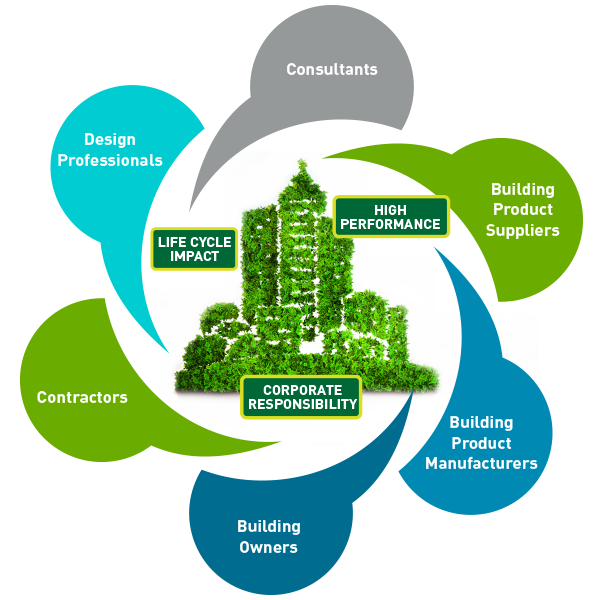 All members of the building ecosystem collectively must be working towards the same goal of healthier building products and put their own bold action into place.
All members of the building ecosystem collectively must be working towards the same goal of healthier building products and put their own bold action into place.
Check out the Stego Footprint Project for more information about how we are working to minimize our corporate environmental impacts and positively impact our people and communities.
This more comprehensive definition of a sustainable building product has also served as the framework for a collaborative effort across the industry to re-affirm health and sustainability goals, but also re-commit to action…an initiative that has been coined as Closing the Transparency Loop.
Closing the Transparency Loop: What Does it Mean?
There’s that term again. For the better part of the last decade, an industry dialogue has flowed between product manufacturers and the AEC community.
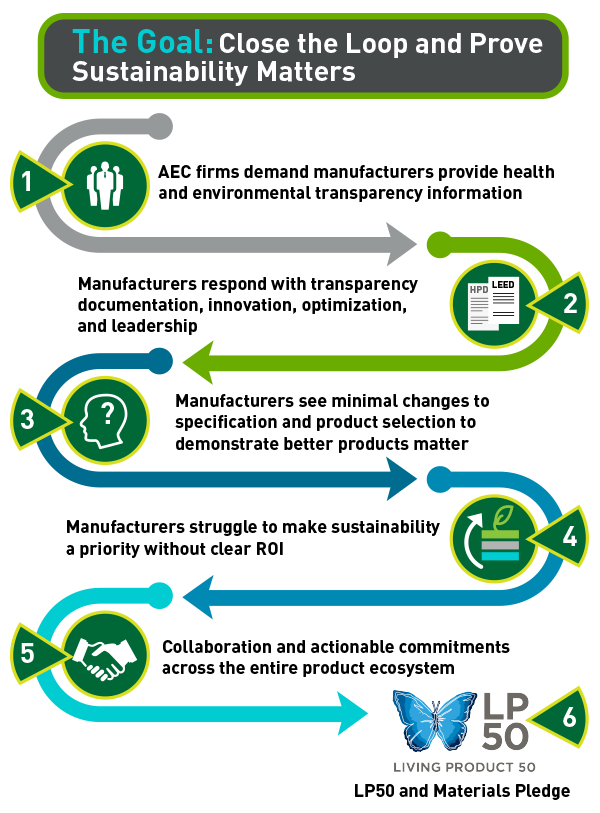
- AEC firms have demanded manufacturers provide more information about the health and/or environmental impacts of their products.
- Many leading manufacturers have worked and responded to these demands with transparency documentation and, in many cases, examples of innovation and optimization.
- However, with seemingly little reward for these efforts in specifications and through product selection it has been difficult for manufacturers to see if this health and transparency information was indeed important to customers.
- Many leading manufacturers have worked and responded to these demands with transparency documentation and, in many cases, examples of innovation and optimization.
- Thus, there has been little incentive and a great challenge for manufacturers (specifically the folks championing the efforts) to continue building a case for sustainability.
To close the loop, through the leadership of Bevan at Superior Essex and Alexandra Mueller at ILFI, the Living Product 50 was born.
The LP50: The Building Industry's "Loop Closers"
The LP50 is a collection of leading building product manufacturers stating continued commitments around transparency, optimization, education, and corporate responsibility while also utilizing a powerful common voice to open dialogue and spur action among, not only the design and construction community, but amongst their own supply chains and teams.
Fortunately, a similar collection of like-minded and leading AECs have listened and reacted in a positive way by developing and signing the Materials Pledge.
The Materials Pledge outlines the shared goals around creating healthier buildings among the AEC community, but also echoes this forward-thinking lens of evaluating sustainability of products holistically. Moreover, with a clear understanding of the need to support manufacturers that are working to demonstrate transformation in the market, the Materials Pledge also re-commits to aligning specifications and product selection with overall sustainability goals.
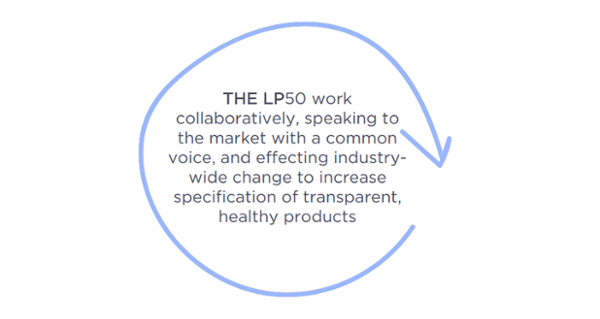
The circle is certainly widening as the American Institute of Architects (AIA) recently adopted the Materials Pledge as an official AIA program. Even more, leading contractors and building owners who share aspirational growth to support human, climate, social, and ecosystem health are also beginning to formulate commitments around building material selection. Collaboratively, progress is indeed being made to clearly demonstrate that sustainability and better products really do matter.
The Sustainability Journey That Lies Ahead
For myself and my company, we admittedly have plenty of road to travel on our sustainability journey. However, we know accelerated market transformation depends on widespread understanding and steps to be taken. We feel we have an important role: to help demonstrate that every product/manufacturer can learn, optimize, innovate, collaborate, and integrate sustainability….even products you don’t always actually see or feel inside a building.
Being a member of the LP50 provides an opportunity to continue with our own progress and be a real part of a truly more sustainable future, while providing the assurance from our stakeholders in the AEC community that our efforts will be recognized.

Written by Tom Marks
Tom Marks is the Business Development Project Manager with Stego Industries, LLC. He has been with Stego since 2007, serving many years as the Rocky Mountains Regional Manager. Now, his focus is geared toward vapor barrier solutions for new and existing homes as the Product Manager of the StegoHome and StegoCrawl brands. In addition, Tom serves as Sustainability Manager, overseeing Stego’s leadership in holistic product and corporate sustainability. Tom enjoys working with a wide range of project team members and customers to incorporate effective sub-slab vapor protection and create healthy, sustainable homes and buildings.
- Stego (26)
- StegoCrawl (24)
- Stego-Awareness (17)
- StegoHome (15)
- Case Studies (14)
- StegoCrawl-Consideration (12)
- StegoCrawl-Awareness (11)
- Customer Stories (9)
- Stego-Consideration (9)
- Pango (8)
- StegoHome-Consideration (8)
- Beast (7)
- How to Install (7)
- StegoHome-Awareness (7)
- Drago (5)
- Pango-Awareness (5)
- Beast-Awareness (4)
- Beast-Consideration (3)
- Drago-Awareness (3)
- Pango-Consideration (3)
- Stego IQ (3)
- Drago-Consideration (2)
- StegoCrawl-Decision (2)
Popular Posts
Stay Connected.
Enter your email below.




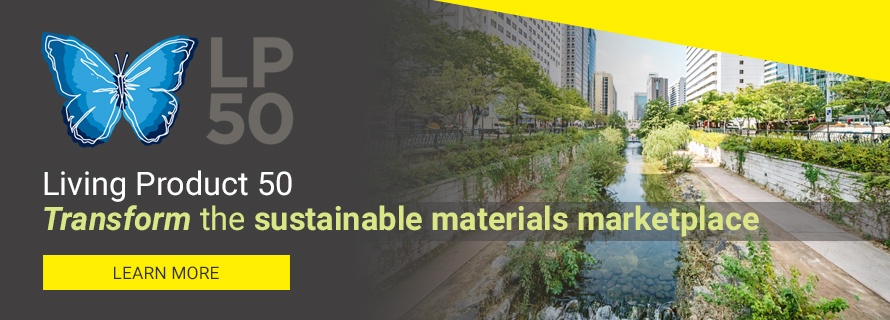


Post Comments